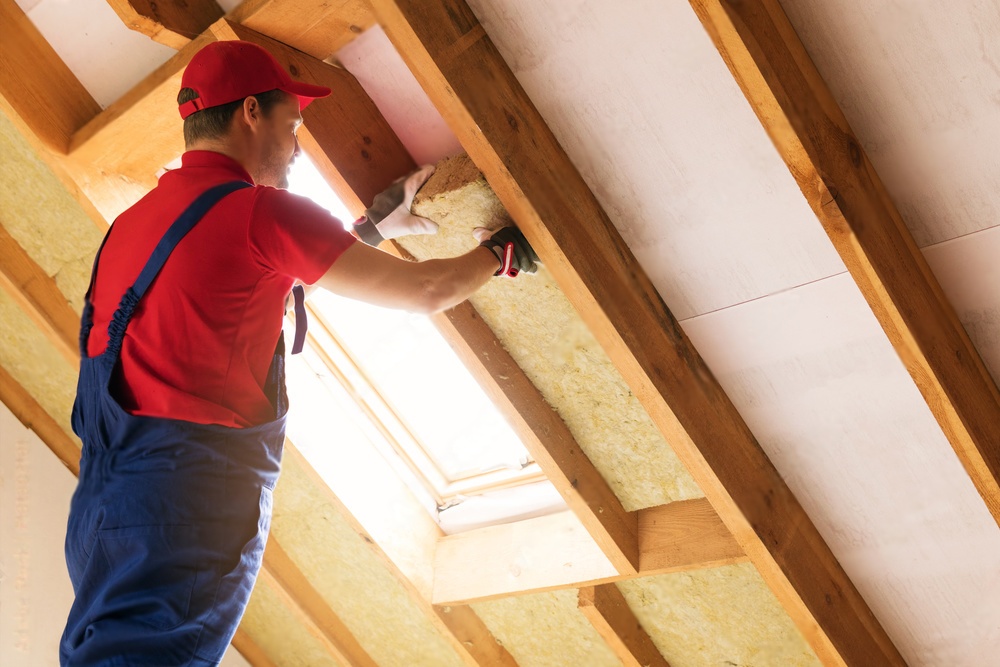WHAT WE DO
Insulation
The easiest way to make your home more energy efficient. Our installation professionals will help you choose the best solution for your home.
Why is it important?
Most homes in Ireland have inadequate insulation levels. This means that heat produced for the home is inefficient and being lost through the walls, windows, floors and roof of the house. Up to 30% of heat loss can be through the roof of your house so the most basic measure you should carry out is attic insulation.
- Save money on your energy bills
- Increase the comfort and warmth in your home
- Reduce your carbon footprint & emissions
- Improve the Building Energy Rating (BER) of your home & add value
- Compliance with any future building regulations
Attic Insulation
Attic insulation comes in different forms depending on your house and what you use the attic space for.
If the attic is empty the cheapest way to insulate the space is with ceiling level insulation. This is blankets of insulation (usually made of fibreglass) that are rolled out.
If your attic is used as a room, you will need to insulate the space with rafter insulation. This is insulation placed onto the underside of the roof of the house to stop heat from escaping. Whilst more expensive than ceiling insulation it allows you to use the attic space easily as a habitable room or for storage purposes without damaging or compacting the insulation and reducing its effectiveness.
The latest building regulations state homes should have 300mm of insulation in the attic and to avail of grants from SEAI for attic insulation you will need to meet this requirement and that your home was built & occupied before 2011. For attic insulation, you are entitled to an up to €1,500 grant as a contribution towards the cost of the install.
Even if you have some insulation in your attic you should consider “topping up” the level of insulation to meet the 300mm building regulations to improve the efficiency of your home.
Cavity Wall Insulation
If you have sufficient attic insulation, the next part of your home you need to insulate is the walls. Similar to the attic the walls lose up to 30% of heat from the home if they are not insulated. Some homes have a cavity in the wall that can be filled by pumping insulation into it and the insulation expands into the cavity to form a full layer of insulation and retain heat in the home.
If the width of your wall measured from the outside to the inside is more than 260mm it is likely that you have a cavity wall. Anything less than this is more likely to be a solid block wall and you will need to consider Internal or External insulation instead. For cavity wall insulation you are entitled to up to €1,700 grant as a contribution towards the cost of the installation.
Internal Wall Insulation
If your home does not have a cavity wall you can insulate the internal walls of the house instead. Some people choose to insulate just the walls that form the outer perimeter of their house to stop heat from escaping outside. Others choose to insulate the internal walls of the house also to regulate the temperature in each room. The minimum that you should consider is to insulate all of the walls that form the outer perimeter of the house to avoid external heat loss.
Internal insulation is where insulation boards are attached to the inside of the wall and covered with plasterboard. There is some disruption inside the home as anything attached to the wall will need to be removed including any skirting boards. As the insulation is placed on the internal wall you will also lose some internal space in the room. For Internal Wall Insulation you are entitled to up to €4,500 grant as a contribution towards the cost of the installation
External Wall Insulation
The ultimate way to insulate the walls of your home is to fit external wall insulation. This is sometimes referred to as putting a coat on around the house to keep it warm and describes it very well. Insulation is wrapped around all the external walls of the house and covered to make it weatherproof. The outside look of the house will change with external wall insulation as you are covering up the original finish of the house, this is especially relevant if you have a brick finish to the original front of your home.
The fitting of external wall insulation does cause some disruption to the outside of the house as it involves erecting scaffolding around the house to be able to fit the insulation from top to bottom. For External Wall Insulation you are entitled to up to €8,000 grant as a contribution towards the cost of the installation





